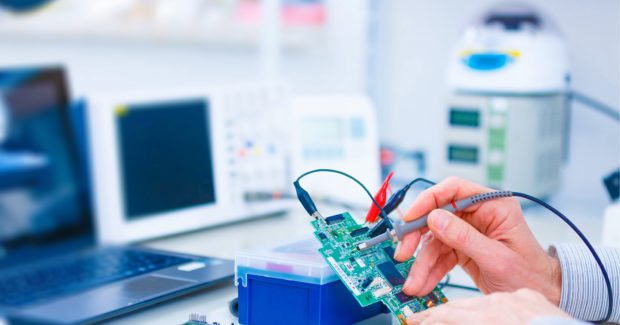Technologies that will Shape Industrial Automation in 2017
We’ve come a long way since the introduction of the first PLC. Here are some of the key technologies that will shape industrial automation in the year ahead.
Posted: December 22, 2016
Innovation is the driver of progress in industrial automation. From the conception of the programmable logic controller (PLC) in 1968 to the introduction of the collaborative robots we see in industry today, technological developments continuously shape the industrial automation landscape. Here are some of the key technologies that will shape industrial automation in the year ahead:
INTERNET OF THINGS
A buzzword of 2016, the Internet of Things (IoT) is a core component of the connected factory and is crucial to the shift to Industry 4.0. The sensors used to link industrial technologies together are not new, but the decreasing size and cost of sensors has increased the prominence of the technology across a growing range of devices. The sensors collect information on sound, vibration, temperature and much more. Companies can then analyse and use this data to control processes, alert the plant manager of problems and correct issues – even before a plant manager is aware of the problem.
COMPUTING POWER
Industrial computers are the heart of industrial automation systems. In 1965, Gordon Moore predicted that the number of transistors in a dense integrated circuit doubles approximately every two years. Recent years have seen the introduction of small, powerful microprocessors, which can precisely control machines by interpreting signals from other equipment. Smaller, faster sensors that are linked to increasingly powerful computers are the foundation of the smart factory. Industrial automation systems with high computing power can capture, process and analyse the big data from the factory floor and be used to improve productivity, avoid downtime through predictive maintenance, improve equipment use, optimise energy use, enable remote access and manage cyber security.
SOFTWARE
The global industrial automation software market is progressing, part of which has been attributed to the integration of software with design and enterprise features, improving functionality. One factor limiting the market and expected to continue to do so is security. Risk to security has increased interest in open-source software maintained by an active community eager to fix bugs. One software area that is influencing industrial automation in the move to the smart factory is application programming interfaces (APIs).
Just like we have to ask others to perform functions we cannot do by ourselves — such as for example carrying a sofa down a tricky staircase — software can also request other software to perform a task. This is done using a set of standardized requests: APIs, which specify how components should interact and make it easier to develop programs. Although APIs are not a new development and have been around since structured programming first came about, they are becoming a more common service or product. Manufacturing involves a range of tasks with different requirements, so APIs allow programmers to write applications consistent with the operating environment. Businesses can now build APIs to accelerate new service developments, improve efficiency and cut costs.
WEARABLE TECH
The popularity of wearable tech in consumer markets is rapidly increasing; from fitness trackers to smart watches, wearable gadgets are everywhere. These devices can integrate real time data and information without hassle. The year 2017 could see an increasing number of wearable technologies in industrial environments. One benefit of this would be that equipment operators can have real time access to more data. In an increasingly automated environment, wearable tech could be one way to improve the collaboration between humans and robots or automated systems. Wearable technology could also improve health and safety; helmets and watches containing sensors linked to supervisors and control centers could also alert employees of any hazards, without distraction from the job at hand. This could even stretch to augmented reality wearable tech.
The coming year is already set to be an exciting period of time in which developments in industrial automation will drive us closer and closer to the smart factory and Industry 4.0. We’ve come a long way since the introduction of that first PLC.
















